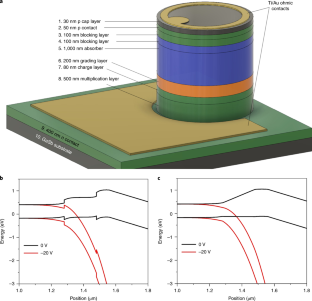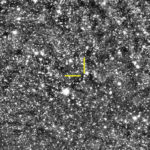(Avalanche Photodiode from UVA and UT-Austin Breaks Performance Record for LiDAR Receivers)
2020/5/27 アメリカ合衆国・バージニア大学

・ バージニア大学とテキサス大学オースチン校(UT Austin)が、記録的な性能を提供するアバランシェ・フォトダイオード(APDs)を開発。
・ 次世代のナイトビジョン(暗視)撮像やコンパクトで高感度な LiDAR レシーバの実現の可能性が期待できる。
・ 分子線エピタキシー法(MBE)を用い、アルミニウム、インジウム、ヒ素およびアンチモンから成る、新たな光学・電気特性を備えたデジタル合金を作製。同合金は、長波長光への高感度、超低雑音、そして現在の低雑音 APD 材料技術には観られない、低暗電流の達成に必要な設計の柔軟性を有する。
・ 結晶成長プロセスを単一原子のスケールで制御する技術により、自然界には無い結晶の合成と、効率的な光検出に必要な基礎材料特性の理想的な組み合わせの設計が可能に。
・ ロボティクス、自動運転車、広域監視システムや地形マッピング等の LiDAR アプリケーションの多くでは、遠距離の対象物に反射した極めて微弱な光信号を検出する高分解能センサーが不可欠。
・ レーザーによる眼の損傷の危険性から、これらの次世代 LiDAR システムの利用が制限されているが、新 APDs の 2μm 電磁窓は眼に安全な上、検出範囲を拡大するため、LiDAR システムに最適。新APDs は、高感度検出器が重要な役割を担う、多数のキーテクノロジーに影響を及ぼすと考える。
・ IQE 社によるファウンドリ・サービス、および Lockheet Maritn 社による読み出し回路付きフォトダイオードアレイの開発に向け同技術を移転。今後の研究では、室温に近い温度下での低雑音作動の達成、作動波長の赤外線への拡張、単一光子レベルまでの感度向上を目指す。
・ 本研究には、米国国防高等研究局(DARPA)および米陸軍研究所(ARO)が資金を提供した。
URL: https://engineering.virginia.edu/news/2020/05/avalanche-photodiode-uva-and-ut-austinbreaks-performance-record-lidar-receivers
<NDO海外技術情報より>
(関連情報)
Nature Photonics 掲載論文(アブストラクトのみ:全文は有料)
Low-noise high-temperature AlInAsSb/GaSb avalanche photodiodes for 2-μm applications
URL: https://www.nature.com/articles/s41566-020-0637-6
Abstract
Sensitive photodetectors that operate at a wavelength of 2 μm are required for applications in sensing and imaging but state-of-the-art devices are severely limited by high dark current density (Jdark). The narrow-bandgap materials required for mid-infrared (2–5 µm) detection are plagued by carrier recombination and band-to-band tunnelling; as a result, detectors must be operated at cryogenic temperatures. HgCdTe is currently the most commonly used materials system for these applications and has achieved Jdark = 3 × 10−4 A cm–2 at a gain of 10 while operating at 125 K. Here, we report the details and results for avalanche photodiodes for 2-μm detection based on a separate absorption, charge, and multiplication design in the AlxIn1–xAsySb1–y materials system. We achieve comparable Jdark between 200–220 K and demonstrate very low excess noise (k ≈ 0.01) and gain >100 at room temperature. Such avalanche photodiodes could prove useful for receivers for eye-safe light imaging, detection and ranging.



